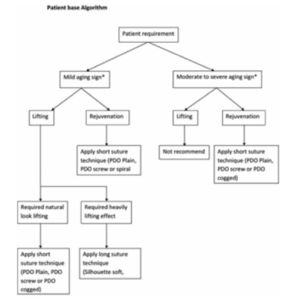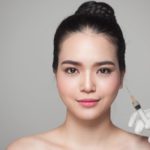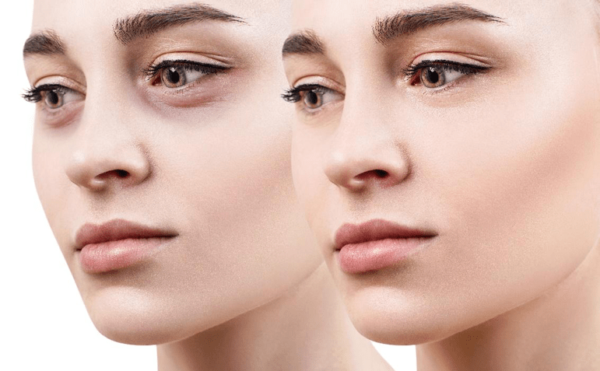

Kim Kardashian’s skincare routine combines the most basic and peculiar skin treatments. She has probably tried everything, from Botox and lasers to Vampire facials, to maintain her youthful and glowing skin. She even once said in an interview with The New York Times in 2022, “I’ll try anything if you told me that I literally had to eat poop every single day and I would look younger, I might. I just might.” As a beauty icon and an A-List influencer, Kim Kardashian is serious about caring for her skin. In a July episode of The Kardashians (the reality TV show Kim Kardashian appears), she mentioned trying the salmon-sperm facial, where salmon sperm is injected into her face. It might sound bizarre and a little strange, but don’t worry; the science behind salmon sperm DNA or salmon PDRN facial will change your mind in trying this unique skin treatment for more glowing skin, exclusively available at Seoul Guide Medical in Korea!
Seoul Guide Medical, a distinguished medical tourism agency in Korea, helps you get the best dermatology services offered by the top 1% of skin clinics. When you partner with us, we will help you achieve youthful and glowing skin with the Korean salmon PDRN facial treatment! We bring you to a team of skin specialists who will assist you with your aesthetic needs and guarantee satisfying results. Avail our free online consultation service to start your journey to youthful skin like Kim Kardashian!
Before experiencing the viral Korean skin treatment, learn more about it in this article. This article will explain everything you need to know (from how it works to where you can get the treatment!) about the salmon PDRN facial, the latest addition to Kim Kardashian’s skincare routine.
What is Salmon PDRN?
Contrary to popular belief, salmon sperm DNA is not a new ingredient in the skincare industry. It is found in current skincare products in South Korea and has recently been added to skin treatment procedures. This widespread use of salmon sperm DNA in skincare routines has become one of the K-beauty trends that has gained traction in the West, popularized by celebrities like Jennifer Anniston and Kim Kardashian.
Generally speaking, salmon PDRN is extracted from a particular salmon species’ sperm DNA. PDRN, which stands for polydeoxyribonucleotide, is the DNA-derived component produced by extracting sperm cells from a specific species of salmon, e.g., steelhead trout (Oncorhynchus mykiss) or Chum salmon (Oncorhynchus keta). It undergoes extensive extraction and purification processes to ensure a high concentration of salmon DNA or PDRN component. It is also biocompatible with the human body, as salmon DNA is quite similar to human DNA. Thus, it has become one of the prevalent sources of modern Korean skin treatments.

According to various sources, PDRN promotes cellular regeneration and wound healing. Hence, it is mainly formulated into anti-aging treatments such as the now-popular salmon sperm DNA facial in Korea. PDRN is often used interchangeably with polynucleotide (PN) due to their similar properties. However, instead of obtaining the component from the sperm cells, polynucleotide originates from a salmon’s testes. Polynucleotides are more concentrated and contain DNA and RNA, unlike PDRN, which only contains DNA.
Since PDRN has been clinically proven helpful for various skin issues, salmon sperm DNA is often incorporated into skincare routines to maintain youthful and glowing skin. Also, due to its tissue regeneration properties on the skin, it shows significant effects on inflammation, hyperpigmentation, and scars.
How does Salmon DNA work?
Salmon sperm DNA skincare is all the rage now, but how does it work? Before tackling the skin regeneration effects of PDRN, we must first understand how skin ages. The skin aging process has two mechanisms: intrinsic and extrinsic. Intrinsic aging happens when the production of fibroblasts (connective tissue cells providing structural support) decreases, reducing collagen and elastin synthesis in the extracellular matrix (ECM). On the other hand, extrinsic aging occurs during prolonged exposure to harmful external factors, such as UV rays, that can trigger inflammation, resulting in skin concerns like age spots, hyperpigmentation, decreased skin elasticity, acne scars, and more facial wrinkles. Although aging is an inevitable part of life, skincare advancements can now delay the skin’s aging process, such as the main topic of our article, salmon PDRN facial.
Just like how Kardashian jumped into this K-beauty trend, salmon sperm DNA skincare may have been an interesting take on slowing down the skin’s aging process for others. However, the sperm in its name may be a dead giveaway, so some may hesitate to try this facial treatment. To disclaim the myth surrounding this particular facial treatment, it is not the salmon’s actual sperm that is integrated into skincare products but the DNA from it, which is more commonly known as PDRN, or, in skincare products, sodium DNA (Polynucleotide sodium).

When applied to the skin, PDRN-containing products activate the adenosine A2A receptor, which targets and controls the oxidative process of the skin cells. This regulates the inflammatory response, improves tissue repair, and accelerates skin healing. PDRN also prevents facial wrinkles by enhancing fibroblast production to stimulate collagen and elastin synthesis. Moreover, PDRN plays a vital role in skin whitening by inhibiting metalloprotein production, which often causes premature skin aging and hinders melanin synthesis, forming dark spots. It was also found that PDRN has skin tissue repair properties by increasing the expression of the vascular endothelial growth factor (VEGF), which is the master regulator of angiogenesis (the formation of new blood vessels).
Current skin booster injections contain polynucleotide (PN), which is said to have higher viscoelasticity than PDRN. This provides significant structural support, making the injection more suitable for the skin and thus producing more prolonged effects. Although PDRN’s specific mechanisms make it a promising agent for various conditions, including whole-face skin improvement, PN’s purer and more concentrated form makes it a better skin-boosting agent, mainly when applied in the under-eye area. However, it is essential to note that PN and PDRN are often used interchangeably in the skincare industry due to their similar properties as skin rejuvenating ingredients.
What Goes Down in a Korean Salmon PDRN Facial Treatment?

Several clinics in South Korea already offer the salmon PDRN facial treatment, but under a different name, the Rejuvenation Healing Booster Treatment, which uses an injectable polynucleotide. It has become popular among the locals as an anti-aging treatment and has filtered through to an international audience with the help of social media and medical tourism agencies like Seoul Guide Medical (SGM) in Korea. SGM collaborates with the top 1% of dermatology, plastic surgery, and eye clinics to help local and international patients achieve their aesthetic goals. Among the facial treatments our partner clinics offer is the salmon PDRN facial or the Rejuvenation Healing Booster.
Here is a general procedure of what happens during a Rejuvenation Healing Booster Facial Treatment. You can also check out one of our patients who received the facial treatment on our YouTube channel.
- Cleansing—Before the treatment, the face must be free of makeup or sunscreen, so the clinic provides makeup remover and cleansers to wash your face thoroughly. The clinic can also cleanse your skin for you.
- Anesthesia—A staff member will apply numbing cream all over the face and let it stay for about 50 minutes. The long numbing period ensures that the following treatment will be as comfortable as possible.
- Disinfection—After the numbing period, a two-step disinfection process takes place, which involves iodine in the first round and then alcohol.
- Salmon PDRN Facial—During the treatment procedure, the doctor injects the Rejuvenation Healing Booster (a polynucleotide-containing skin booster) across the entire face, maintaining uniformity in the distance and amount of product at each injection point. In addition to the face healing booster, it is also available as a Rejuvenation Eye Booster, which targets the delicate eye area with its finer gel consistency and ultimately brightening under-eye darkness. The procedure may be uncomfortable; thus, an icy cooling massage stick will be applied to the skin for comfort. With each probe into the skin, the skin becomes red and slightly bumpy. This will gradually fade after a few hours.
- Aftercare—A staff member will apply a layer of regeneration cream to help the skin recover quickly after the facial.
Seoul Guide Medical also recommends several other skin procedures, such as Ultherapy, Fraxel Laser, dermal fillers, and contouring injections, to be performed alongside a salmon PDRN facial to achieve optimal outcomes. For instance, Ultherapy is an ultrasound-powered treatment that can lift and tighten the skin, promote collagen production, and enhance the absorption of skincare products. When paired with a salmon PDRN facial, Ultherapy can help the salmon DNA booster penetrate deeper into the skin, maximizing its rejuvenating and anti-aging effects. The same goes for non-ablative laser resurfacing treatments such as Fraxel lasers that target the deeper skin layers without damaging the surface. When combined with salmon PDRN facial, Fraxel laser can address pigmentation and dark aging spots while PDRN enhances overall skin rejuvenation.
How to Get Kim Kardashian’s Salmon Sperm Facial Treatment?
The salmon PDRN facial treatment originated in South Korea and is already offered in several skin clinics. Thanks to social media and the globalization of Korea’s medical tourism industry, it has now spread its influence into Western countries, where celebrities like Kim K have picked up on the trend.
Seoul Guide Medical, a renowned medical tourism agency in Korea, has significantly contributed to the widespread popularity of Korean skincare through its unceasing pursuit of connecting top-rated Korean clinics with patients worldwide who seek to stay youthful. SGM partners with several reputable skin clinics that offer a wide range of dermatology services, from filler injections to skin lifting, noninvasive facial contouring, and anti-aging treatments. You can get Kim Kardashian’s salmon sperm facial treatment from one of the three reputable clinics of SGM—Renovo Skin Clinic, AMOA640, and Theme Dermatology in Korea.
As a bridge between the Korean medical tourism industry and patients worldwide, SGM will guide you from your first consultation, airport pick-up, and accommodation to the best skin clinic that will suit your needs and ensure a smooth process to achieve your aesthetic goals. To start your journey to beautiful and youthful skin with the viral salmon sperm DNA skincare, message us through our contact channels or avail of our free online consultation service, where one of our agents will promptly answer your inquiries. Get youthful and glowing skin like Kim Kardashian with Seoul Guide Medical’s salmon PDRN facial in Korea!























